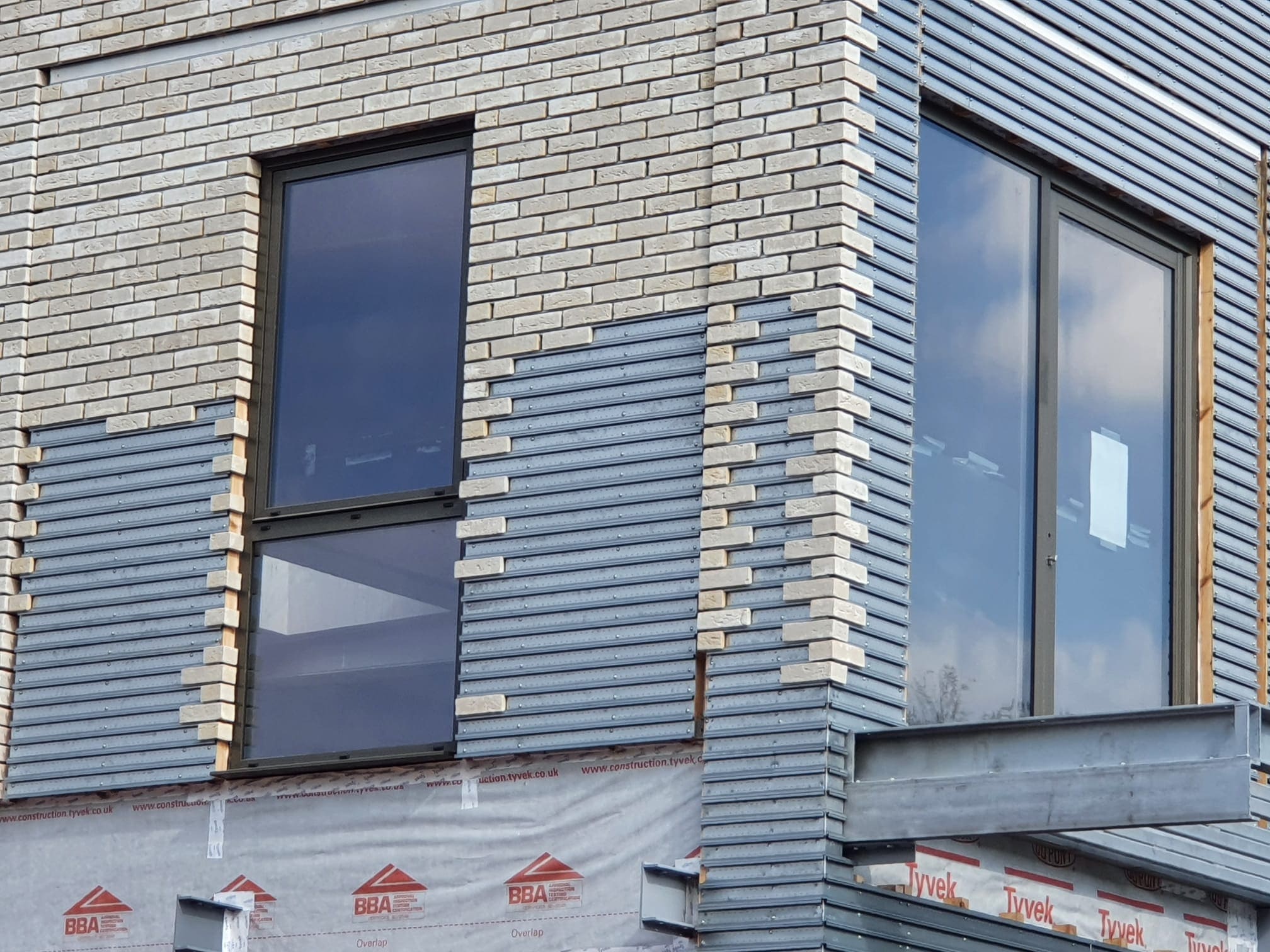09/05/2023
by: Maryanne Bowring

For investors, Build to Rent and single-family housing (SFH) go hand-in-hand.
However, the complexities surrounding the SFH market makes it an increasingly difficult sector to master, compared to that of Build to Rent. The managing of SFH wildly differs to that found with Build to Rent strategies, presenting both challenges and opportunities to investors. Over the last decade, operationalisation of the living sectors has emerged as the mega-trend of UK real estate. The allure of long-term, counter-cyclical income streams in a defensive asset class has seen an influx of institutional capital pile into an increasingly sophisticated rental housing market.
This is most obvious in multifamily Build to Rent, where £4.3bn in the last year alone has been deployed by some of the world’s largest pension funds, endowments and sovereign wealth funds. Local authorities are increasing their exposure in droves, including municipal capital motivated by the demand/supply dislocation still present in high-quality rental housing.
At the heart of any successful Build to Rent strategy is the investor’s ability to master operations – the engine room of performance. Amenities, customer service, building maintenance, staffing and deploying technological solutions at scale, are instrumental to value protection and creation. Finding opex efficiencies and reducing leakage can improve gross-to-net and operational income, maximising portfolio returns.
For investors with Build to Rent exposure, a move into SFH may seem an obvious next step. The investment case is similarly underpinned by housing market unaffordability, insufficient supply and demographic trends. Its nascency is appealing, and the potential to finetune operations for low risk, stable income might at first appear to mirror that of Build to Rent..
But investors shouldn’t be fooled. The operational dynamics in SFH take on an entirely new complexity. If Build to Rent is chequers, then SFH is chess.
If you thought that achieving sufficient scale in Build to Rent to satisfy institutional investors was tough, then SFH is hard mode. In its decentralisation, any one single-family portfolio can comprise potentially thousands of loosely connected assets.Aggregating, managing, and operationally monitoring individual units is an issue that isn’t encountered in traditional Build to Rent strategies, where the community is housed in a single building. Logistical strategies across building maintenance, connectivity, deliveries, and repairs must be replicable to maintain the thin margin obtained by streamlining operations.
Even after navigating this initial barrier, operations intrinsic to SFH grate against a series of fresh expectations from potential customers. We could call these frictions, but largely they combine privacy and security considerations, access rights for regular inspection and surveillance. Traditional Build to Rent and the operator’s general control over communal areas means that the building’s performance can be optimised to suit residents’ requirements, from the configurability of space, to leasing and renewals.
That isn’t to neglect that the breadth of the demographic you service isn’t entirely different, either. SFH may benefit from a stickier customer base by virtue of longer leases, but modelling the services required to house families multiplies basic operational processes.Addressing sustainability concerns, a non-negotiable reality for today’s institutional investor, is both a challenge and opportunity, with portfolio granularity meaning variation by design, building materials and site configuration – put simply, their readiness to adopt ESG. Cap-ex implications aside, implementing a uniformed strategy is a huge logistical challenge when faced with so much difference
The nuts-and-bolts of operational oversight is magnified in SFH, meaning an enlarged technological capability is fundamental to drive returns.
The industry is still working out what good looks like. This will become clearer as more schemes become operational, but in the meantime, learning is needed to take SFH out of a subcategory of Build to Rent and into its own asset class with starkly different, more complex, operational requirements.Investors will need to redirect their focus from amenities and customer service to operationalisation that supports a full-scale residential community. This requires a substantial shift in mindset, even for active investors with exposure to operational real estate, demanding a truly integrated operational model that can switch lenses from the minor detail of day-to-day management to scheme-wide operational considerations.
This is easier said than done, as the nuances of SFH make clear, but not impossible if an operating partner can perfect a variables-based approach to multi-asset management.Part of this new learning will be responsive. The tech stack behind Ringley’s approach to operations trades in the aggregation of marginal returns. By digitising every element and operational scenario that affects the operational bottom line, we can target inefficiencies and introduce new variables within a dynamic operating framework.Another element will be borne out in practical application. Our proprietary technology allows the operating framework we apply to respond to and benchmark against different customer preferences, managing at the granularity required by SFH. There will be trends common to this sector, and it is for operators to identify them. Either way, SFH’s proliferation is unlikely to slow anytime soon, with 15,000 homes already in the pipeline. Investors and developers are committing to new projects in the anticipation that operational support will be competitively supplied.
Those with an intricate understanding of operations can make the margin that will take SFH from a good idea to an obvious evolution of income-generating residential real estate.
Managing the Complexities of SFH through Technological Innovation
The operational challenges in single-family housing (SFH) necessitate a greater reliance on technology for efficiency and scale. Unlike Build to Rent, where managing a single building or complex is relatively straightforward, SFH portfolios span decentralized, often disparate units. To address this, a robust technological framework is essential. Digital solutions for maintenance tracking, tenant communications, and real-time performance monitoring will play a key role in managing a diverse range of properties. By integrating these technologies, investors can streamline operations, identify inefficiencies, and improve service delivery, ultimately ensuring the profitability of SFH portfolios.
The Importance of Customizing Operational Models for SFH Success
Building on the complexities outlined, the need for a tailored operational model in SFH is undeniable. For operators already experienced in Build to Rent, transitioning to SFH demands a shift in operational thinking. Unlike larger, homogenous Build to Rent developments, SFH requires an approach that acknowledges the individuality of each property while still maintaining economies of scale. This shift involves adapting leasing strategies, tenant engagement methods, and service offerings to suit the unique needs of individual homes, while still capitalizing on the collective potential of a large portfolio. A more nuanced, flexible strategy is required to meet the diverse needs of this evolving asset class.
Leveraging Operational Expertise to Scale SFH Portfolios
For investors looking to scale their SFH portfolios, operational excellence is the key to unlocking long-term value. It’s not simply about acquiring more assets, but about managing them effectively across various touchpoints—tenant communication, property maintenance, and community building. This is where expertise in operational management truly shines. A well-executed SFH strategy combines deep knowledge of property management with an agile, responsive technology stack. By continuously analyzing data and refining processes, operators can ensure that each property within a larger portfolio is managed efficiently, providing consistent returns and improving the overall tenant experience. Those with the operational know-how will be best positioned to navigate the growing SFH market and transform it into a profitable and sustainable investment.
For investors looking to scale their SFH portfolios, operational excellence is the key to unlocking long-term value. It’s not simply about acquiring more assets, but about managing them effectively across various touchpoints—tenant communication, property maintenance, and community building. This is where expertise in operational management truly shines. A well-executed SFH strategy combines deep knowledge of property management with an agile, responsive technology stack. By continuously analyzing data and refining processes, operators can ensure that each property within a larger portfolio is managed efficiently, providing consistent returns and improving the overall tenant experience. Those with the operational know-how will be best positioned to navigate the growing SFH market and transform it into a profitable and sustainable investment.
btrnews.co.uk
 2434
2434












Keep up to date
(Weekly, fortnightly or monthly)
To find out more what we do with your data, please read our Privacy Policy

 0
0













